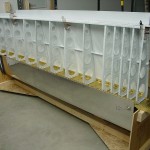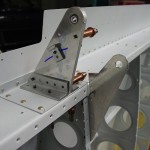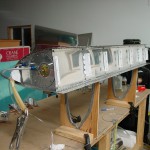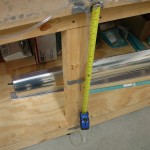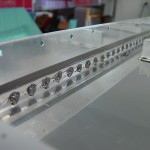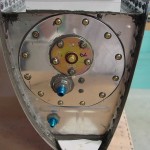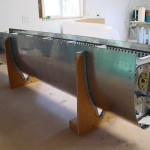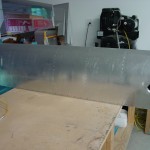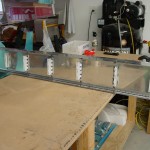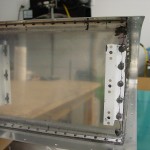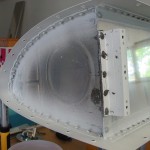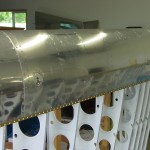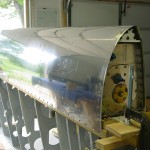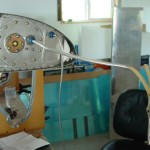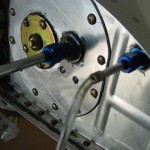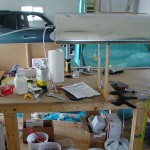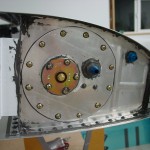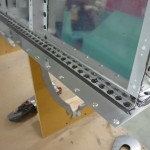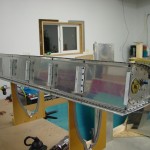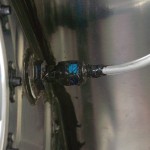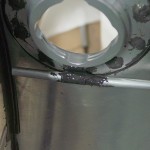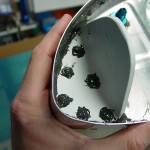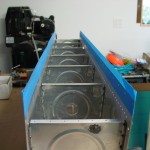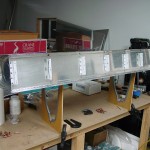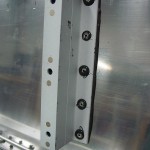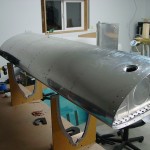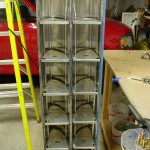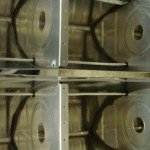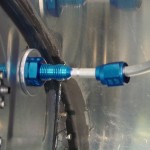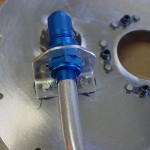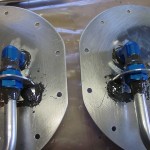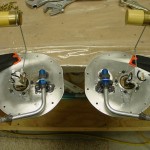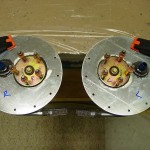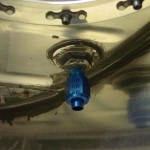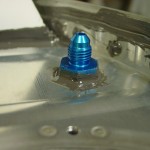Wing odds & ends
Nursing some wrist pain today, so not much productive shop time. Finished building the wing cart by attaching some swivel casters I picked up last night, and padding the leading edge cutout with foam pipe insulation, then set the completed left wing in the cart. Looks good, and rolls nicely. I think there is enough room between the two wing slots that the horizontal stabilizer could be stored on the cart, as well.
Drilled the flap and aileron brackets to the left wing, and pulled out the gap fairings to mess with for a bit. Torqued the aileron bellcrank brackets in the left wing. Dimpled the wing walk doubler for the right wing. Cleaned up the shop a bit, and spent some time just sitting in the shop and looking at things, pondering.
(NB. This post being counted in multiple categories — something which may happen more often, as a work session touches on multiple items. I’ve split the last several sessions into multiple posts, as the time blocks were larger and more well-defined. In the case of multiple categories on a post, each category will total the entire number of hours from the session, but the “grand total” will count it only once. I wish there was an easy way to resolve this, but it is what it is–and since the hours tracking isn’t a requirement of any sort, just for my curiosity, not a big deal.)
Hours: 1.6 | Posted in Ailerons, Flaps, Fuel Tanks, Wings | Comments Off
